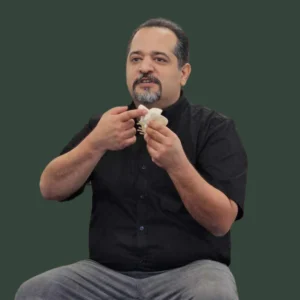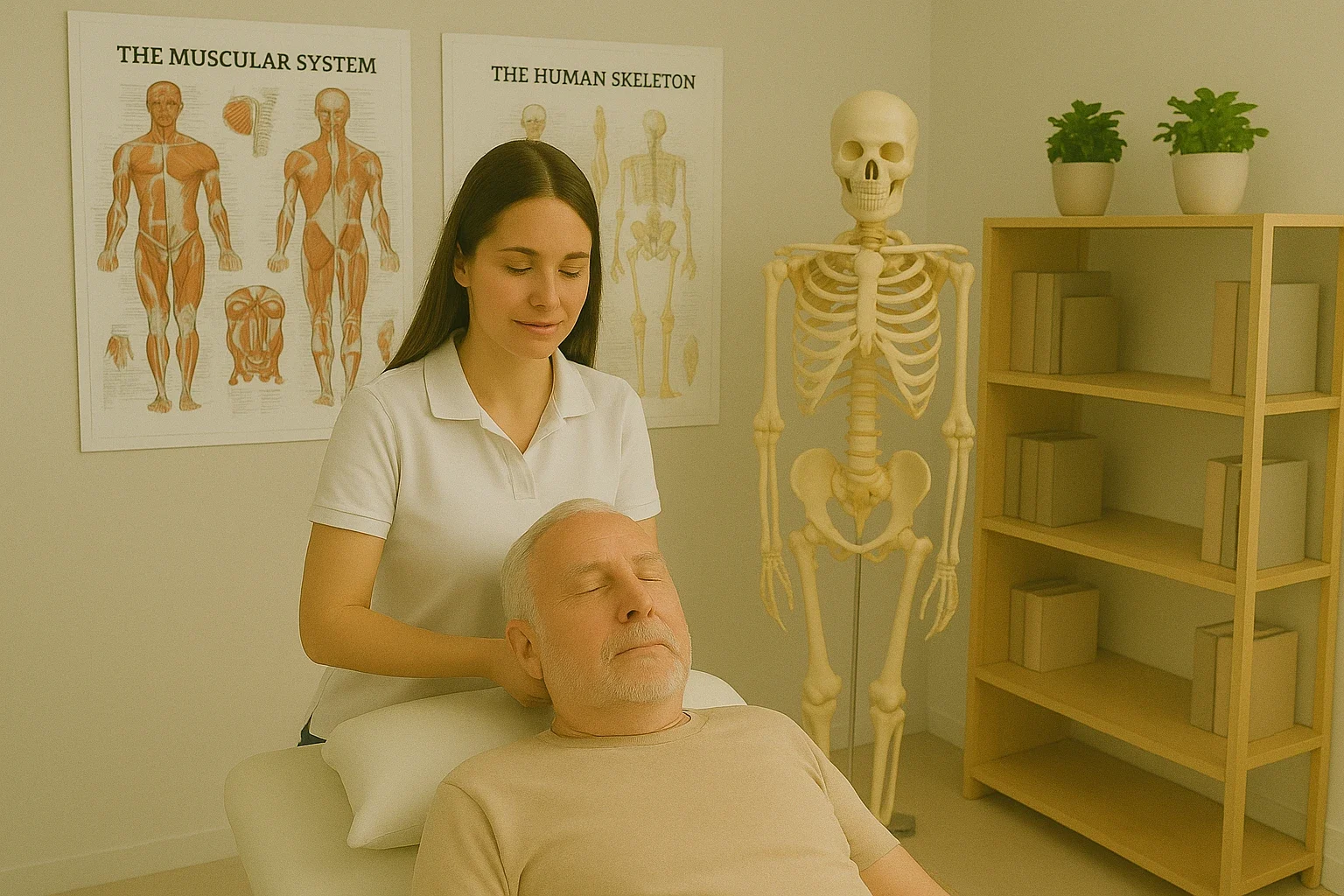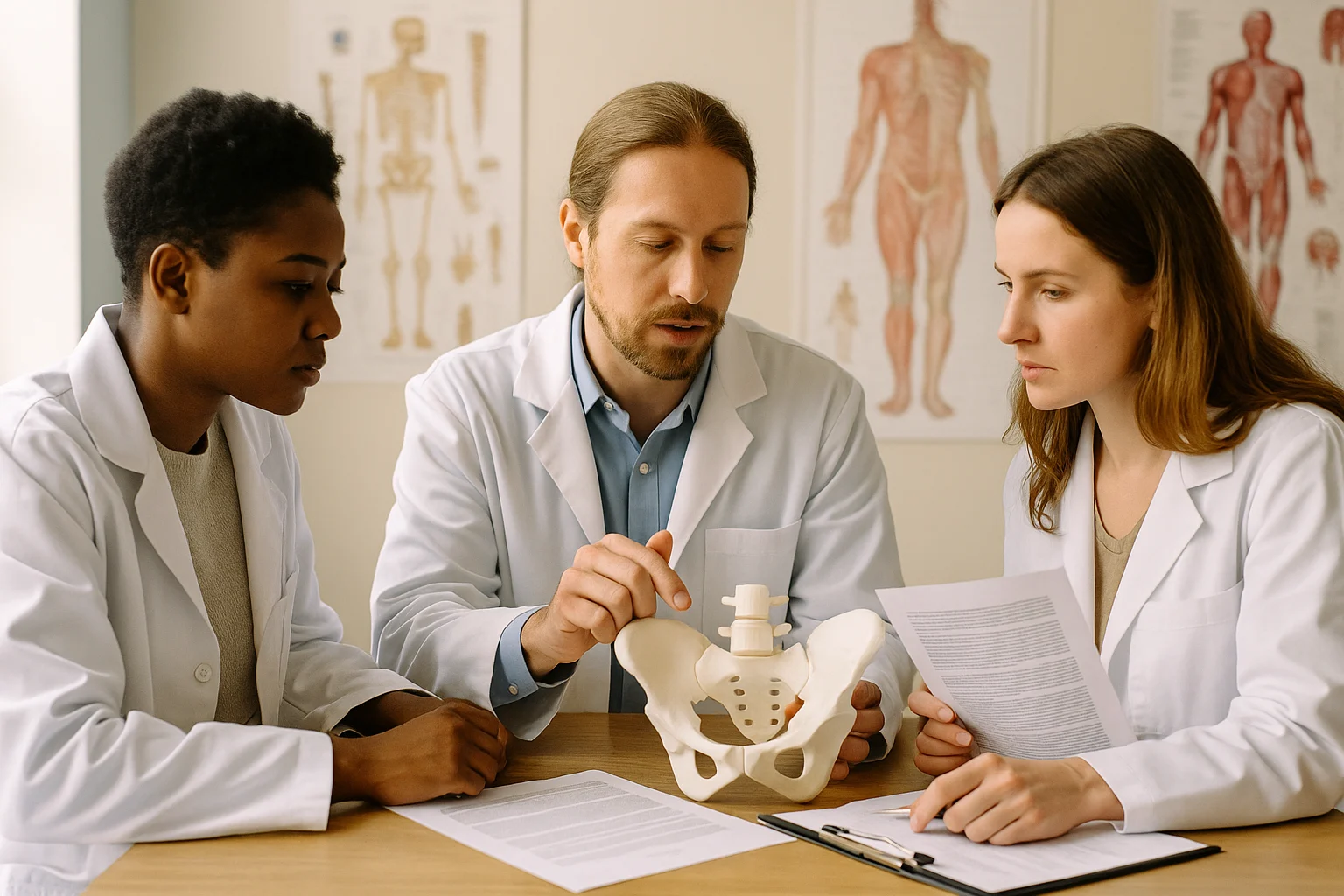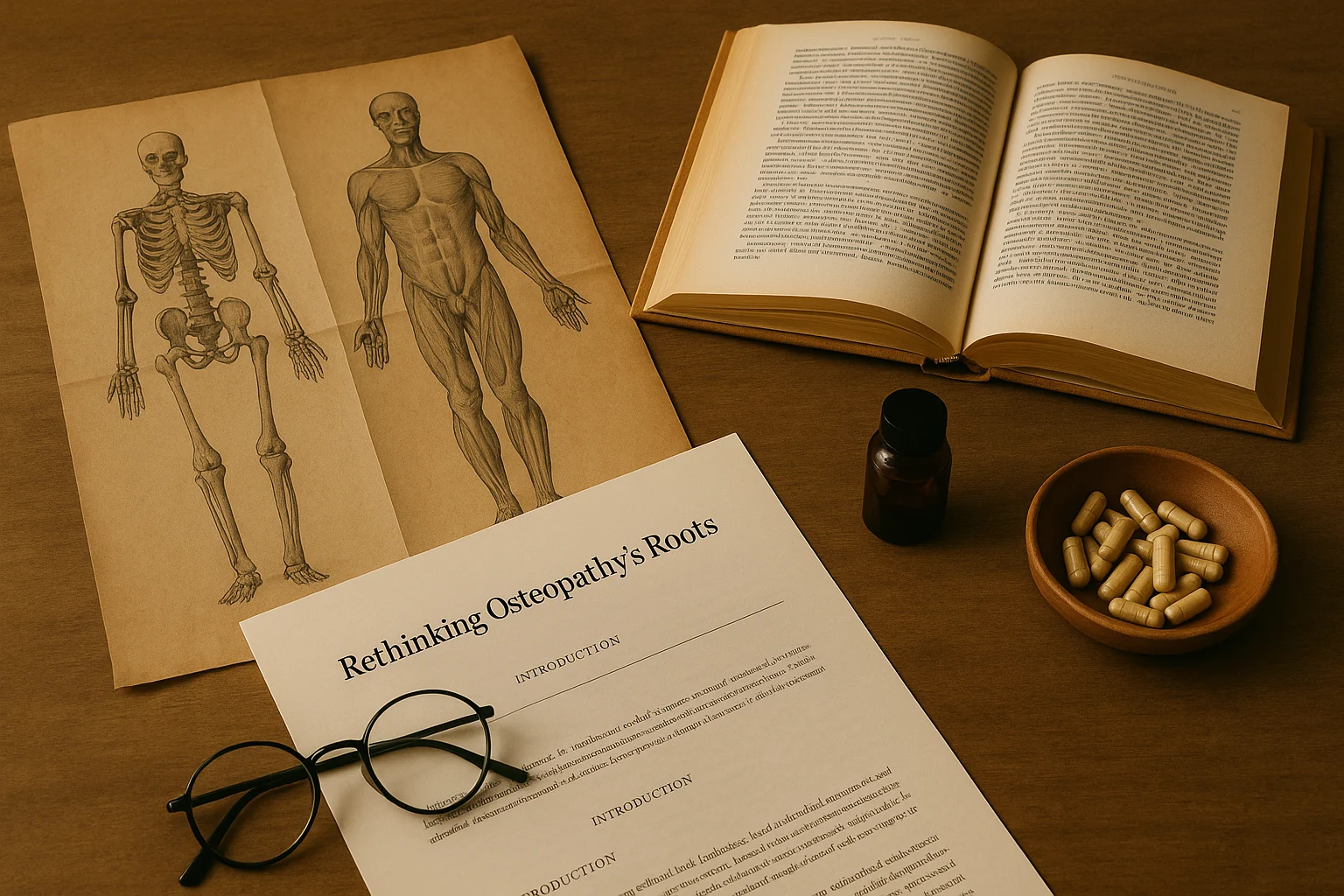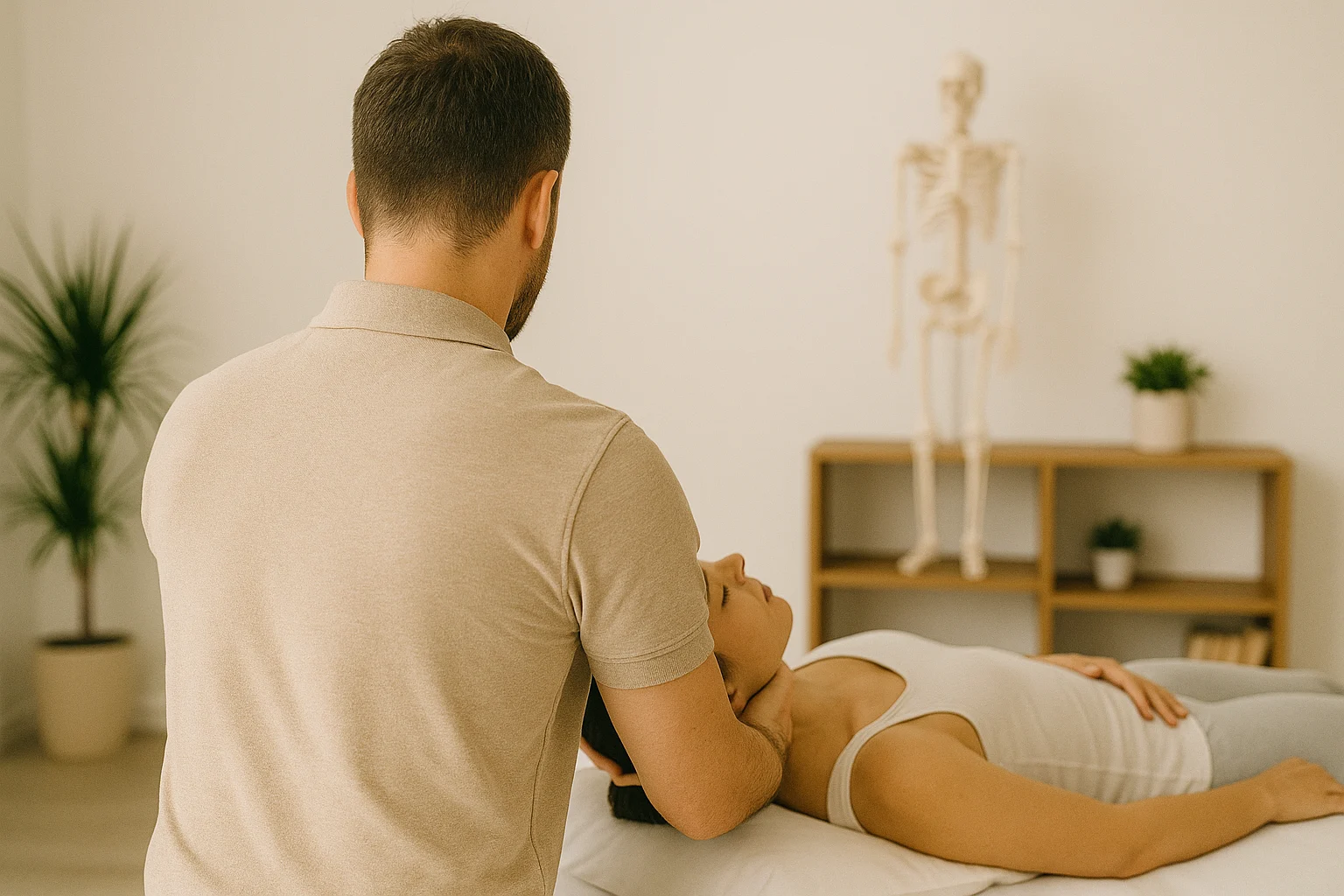Introduction: The Rise of Geriatric Osteopathy
As the global population ages and in Canada, nearly 1 in 5 people is now aged 65 or older, according to the 2021 Census, healthcare systems are increasingly challenged to meet the needs of older adults. For osteopathy practitioners, this presents an exciting and meaningful opportunity. Geriatric osteopathy care specifically tailored to elderly patients is a rapidly growing niche that combines compassion, clinical skill, and the unique strengths of manual therapy.
Understanding Geriatric Osteopathy
Geriatric osteopathy focuses on treating the aches, pains, mobility issues, and postural changes common in aging bodies. Unlike many other niches, this niche does not require an entirely different set of clinical tools but rather a refined, thoughtful application of foundational osteopathic principles. Osteopathic treatment is inherently well-suited to this population due to its gentle, non-invasive nature.
Common Conditions Treated in Elderly Patients
Elderly patients often present with overlapping chronic conditions. The most common include:
- Osteoarthritis and Joint Degeneration: Particularly in hips, knees, and spine.
- Chronic Back and Neck Pain: Often tied to decades of postural strain or disc degeneration.
- Postural Changes and Balance Disorders: Leading to fall risks and mobility reduction.
- Osteoporosis and Fracture Recovery: Requiring cautious, supportive manual care.
- Rehabilitation After Joint Replacement Surgery: Strength and mobility retraining.
Ideal Osteopathic Techniques for Elderly Patients
Most standard osteopathic techniques can be used with seniors when applied appropriately. The best modalities for geriatric patients include:
- Positional Release Therapy (PRT): Perfect for painful, sensitive joints.
- Muscle Energy Techniques (MET): Enhances joint motion with minimal strain.
- Gentle Joint Mobilization: Improves function safely in fragile joints.
- Myofascial Release and Soft Tissue Therapy: Alleviates tension and boosts circulation.
- Cranial Osteopathy: Supports nervous system balance and relaxation through light-touch techniques, especially beneficial for frail or hypersensitive patients.
Since these techniques are already common in most osteopaths’ toolkits, no major retraining is required—just a focus on applying them with increased awareness and care.
Essential Skills and Knowledge to Review and Master
While the techniques may be familiar, it’s important to:
- Refresh rehabilitation protocols for patients post-hip or knee replacement.
- Learn gentle strength and balance exercises that support aging muscles.
- Understand fall prevention and how to design care plans with mobility in mind.
A short course or refresher in elderly rehab or functional exercise prescription can enhance your effectiveness and confidence.
Clinic Setup and Considerations
Designing a Special Balance Workshop
One highly effective way to attract and serve elderly patients is by offering a targeted balance and mobility workshop. These workshops not only showcase your expertise but also provide an accessible entry point for new clients.
What to Include in the Workshop:
- A brief educational session on fall prevention and how osteopathy supports balance.
- Gentle group exercises focused on stability, coordination, and lower limb strength.
- Instruction on home exercises and walking strategies to reduce fall risk.
- Balance testing and gait analysis with personalized recommendations.
Workshop Logistics:
- Offer 30–60 minute sessions weekly or bi-weekly.
- Cap class sizes to ensure personalized attention (6–10 participants).
- Price affordably or offer the first session free as an introduction.
Promotion Tips:
- Advertise through senior centers, local newspapers, and caregiver networks.
- Offer printable flyers to post in retirement communities.
- Encourage participants to bring a friend or caregiver, increasing comfort and word-of-mouth referrals.
By running these workshops, you not only help prevent falls and increase independence for seniors, but also build long-term trust and patient loyalty within your community.
A few small adjustments to your clinic space can make it senior-friendly:
- Non-slip floors and sturdy handrails in treatment and waiting areas.
- Adjustable treatment tables that are easy to mount and dismount.
- A dedicated exercise space for guided rehab and movement therapy.
- Group class opportunities, such as walking support or balance improvement sessions.
These additions enhance both the treatment outcomes and your ability to scale services for this demographic.
Marketing Your Geriatric Osteopathy Niche
To grow your presence in this niche, effective communication is key:
- Partner with retirement homes, senior centers, and geriatric clinics. Offer complimentary workshops or movement classes.
- Use community engagement—give free talks, write local health columns, or host balance screenings.
- Tailor digital marketing to speak directly to family caregivers and older adults.
- Share testimonials and reviews from elderly patients and their families to build trust.
Location and Accessibility
If possible, position your clinic near:
- Retirement communities
- Assisted living residences
- Medical centers serving seniors
Or, consider renting space in one of these locations—such as a retirement home or senior activity center—once a week to run workshops or offer treatment sessions. This approach not only makes your services more accessible but also builds visibility and trust directly within the community you’re serving.
Additionally, offering mobile osteopathy services or home visits can set you apart, especially for clients who find travel difficult.
Financial and Business Considerations
This niche can be highly stable and sustainable, as older adults often seek ongoing care. Consider:
- Flexible appointment times, such as early mornings.
- Discounted maintenance plans for monthly or bi-weekly care.
- Clear insurance and billing communication with family members or caregivers.
Case Studies and Success Stories
Nothing markets your practice like real patient success. Share:
- Case studies showing rehab progress after hip surgery
- Stories of patients returning to walking or gardening pain-free
- Testimonials about improved balance and reduced fall risks
Conclusion: A Niche That Gives Back
Geriatric osteopathy is not only a smart business decision—it’s a meaningful, fulfilling direction for any practitioner. You don’t need to start from scratch. You simply need to:
- Master gentle, non-invasive tools
- Review rehab and fall prevention strategies
- Adapt your space and schedule
- Market thoughtfully within your community
In doing so, you position yourself as a vital resource for a population that truly needs—and deeply appreciates—what osteopathy has to offer.


